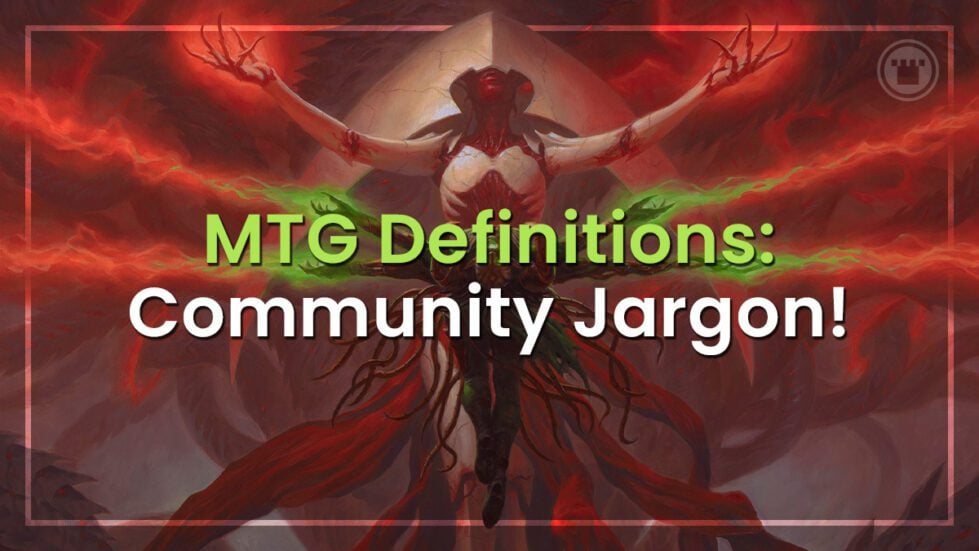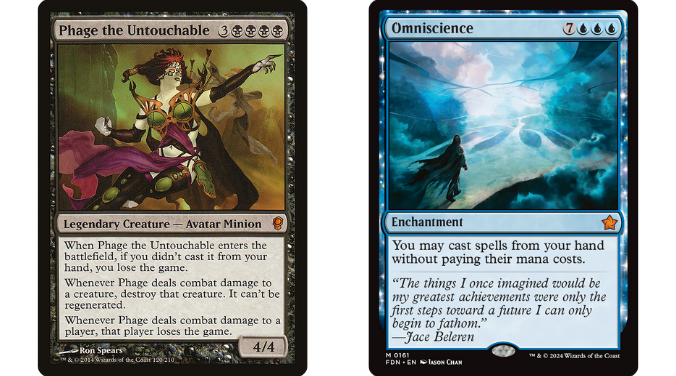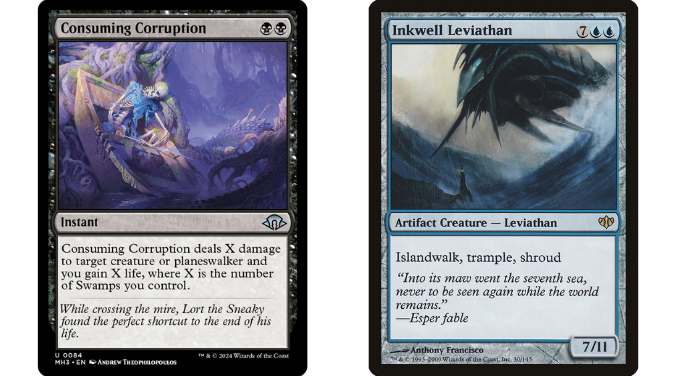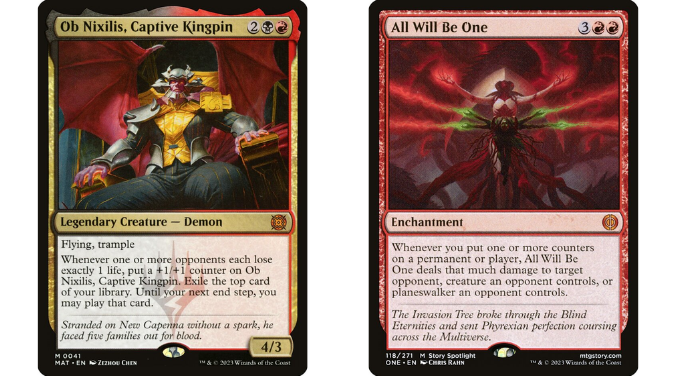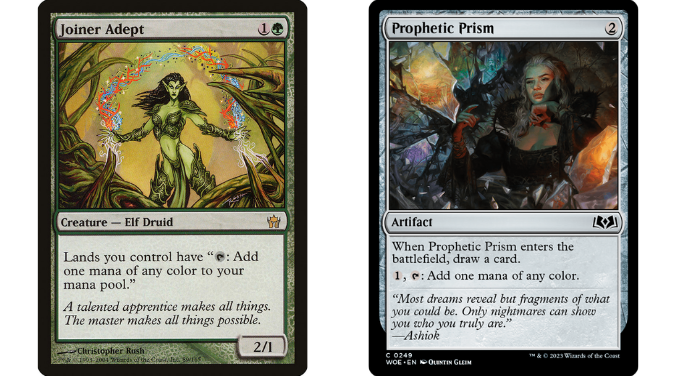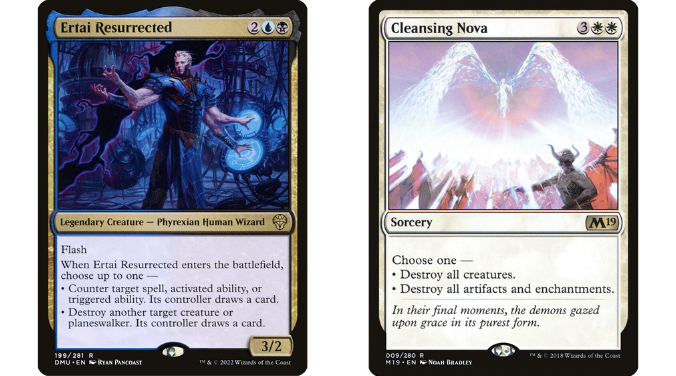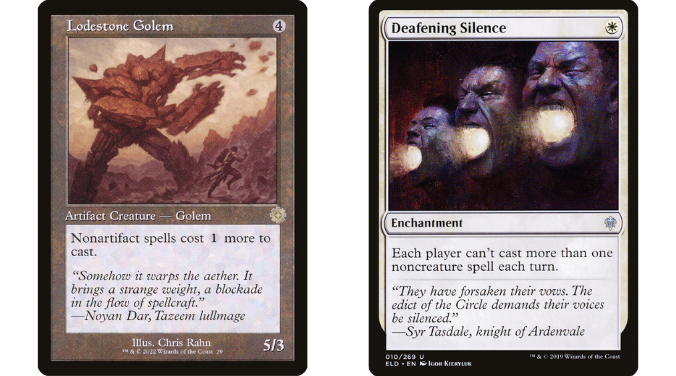The way Magic unites a huge global community of like-minded gamers is one of its strongest selling points – it’s so important they put The Gathering right there in the name!
But like any focused and literate community that has discussed the same niche topic for 30 years, Magic players have generated a huge lexicon of slang, technical jargon, in-jokes and shorthand terms.
That sort of in-group language does help players communicate more quickly and eloquently, encapsulating dense concepts like “control”, “stax” or “fixing” with single words. But there is one downside: it makes that discussion indecipherable to newcomers.
This barrier isn’t impenetrable, obviously. Every current Magic player has had to endure that learning curve in their own time. But I know I would have appreciated having more resources which clearly defined some of these important bits of jargon for me when I was starting out. So for this blog, I’ll try and get through as many of the important ones as I can!
Win Condition/Threat/Bomb
Win condition is a fairly literal bit of terminology, but it is a very important one. Understanding your own deck (or your opponent’s) starts by understanding the win conditions (“wincons”). If you know how the deck aims to win, you can work backwards to understand which cards are most important or replaceable, and start to anticipate how they match up.
A win condition can be a specific card, a combination of cards, or more of a flexible goal (e.g. “attack early and often and kill all their blockers” or “mill their whole library”). Sometimes the best definition of a win condition isn’t actually the way a deck ends the game, but the point at which it becomes academic – a card like Winter Orb can make it nearly impossible for opponents to do anything.
“Threat” and “bomb” are synonyms which have slightly more narrow usage. These terms always refer to an individual card (rather than a conceptual gameplan). They’re also used a bit more freely, referring to any card which has a credible chance of killing an opponent even if that’s not a card your deck is built around. “Bomb” is mostly used in the context of Limited, where its meaning overlaps with “card that’s valuable to draft due to game-changing power level”.
Aggro/Control/Midrange/Combo
These are the four fundamental strategic categories that all Magic decks fall into. Usually you’ll see decks described by these categories plus their colors (“Red Aggro”, “Blue-Black Control”) or their signature card or card type (“Omniscience Combo”, “Angel Midrange”). There’s a lot of nuance to each of these categories, but broadly speaking they describe how the deck wants to win games, and what their priorities are when putting a deck together to serve that gameplan.
Aggro decks are built from the ground-up to kill the opponent as quickly and consistently as possible. Usually the majority of cards in your deck deal damage to the opponent, and are cheap to play. That way no matter what combination you draw, you’ll still be able to convert all those cards into damage within the first few turns. It’s an all-in approach that needs to win or at least get the opponent critically low with that opening flurry.
Control decks are the philosophical opposite of aggro decks. They play defensively and reactively, with the goal to block, disrupt and survive until the opponent has thrown their best punches. If you can make it impossible for them to beat you, the thinking goes, then the question of how to win yourself becomes much simpler. Where aggro decks are built so that almost every card helps kill your opponent, control decks only need one or two very powerful and expensive spells that can eventually win on their own. This means all the other cards in the deck can be strictly defensive in nature, enabling that signature playstyle.
Combo decks are those which rely on a specific combination of cards which, when played together, have some overwhelmingly powerful effect. Usually, assembling your combo means you immediately win the game regardless of how bad your situation was up to that point. So instead of trying to damage the opponent or build up their defenses, combo decks usually spend all their resources just setting up that combo as quickly as possible. The goal of winning quickly and consistently makes combo the weird cousin of aggro, but you need different tools to defend against each. There are also some control decks which use a combo as their eventual game-winner, but because they don’t put extra effort into finding that combo they are clearly in the “control” category.
Midrange is often used as a bit of a catch-all term for decks which don’t clearly fit into the other three categories, but that doesn’t mean it’s not a valid or useful descriptor. Midrange describes decks that are NOT built to maximize a specific win condition, but instead try to simply play cards that are impactful and cost-efficient at every stage of the game. Theoretically, this gives you the consistency of an aggro deck with the strategic flexibility of control. You’ll never be undone by drawing bad cards or failing to draw the right combinations, and you should have the raw class and mix of options to counter any opponent.
Mana Curve/Curve Out
If you take all the lands out of your deck and then sort the spells by their mana cost, you’ll end up with a sort of bar chart with columns for zero-cost, one-cost, two-cost, and so on. This “mana distribution”, and the relative heights of each column, are referred to as your deck’s “mana curve”. Ideally, it should actually look like a gentle curve that peaks relatively early (at the one- or two-cost columns) and then slopes downwards as the cost increases.
Of course, the precise curve that is optimal will depend on your gameplan, and some decks manipulate mana in ways that make the idea meaningless. But for aggro and midrange decks (as well as all decks in Limited formats), keeping your mana curve in mind and adjusting your decklist to attain the right ratios is vital. The goal for these decks is to “curve out” in every game – referring to hands where you can play a one-mana spell turn one, a two-mana spell turn two, a three-mana spell turn three, and so on for as long as possible.
Mana Ramp/Acceleration/Fixing
Since mana is such an important part of the game, there’s lots of strategic terminology to describe how players interact with it. “Mana screw” – not drawing enough lands – and “mana flood” – drawing too many – are probably the first bits of Magic jargon most players learn!
“Mana acceleration” and “mana fixing” are much more positive terms. Describing a card’s effect as “mana acceleration” or “mana ramp” means it increases your available mana faster than you could just by playing one land each turn. Some cards do this by putting extra lands into play from your deck, while others can directly produce mana on their own. “Ramp decks” focus on doing this consistently to the point it defines their strategy, effectively charging up for the first few turns in order to unleash a late flurry of massive spells!
“Mana fixing” or “color fixing” is not quite the same thing – although some effects can be both fixing and acceleration. “Fixing” effects help multicolor decks to manage their mana so they can always produce the right combination of colors needed in a given situation. This means any two-colored land could be described as fixing, although the term more often refers to effects like Treasure tokens or Mana Confluence which can produce any colors you desire.
Splash
This is a deckbuilding term used in both Constructed and Limited formats, referring to a color which is only needed for a minority of cards in your deck. Describing a deck as “blue-white control” would lead listeners to believe that it contains a roughly even amount of blue and white cards, as well as equal numbers of lands in each color.
But describing that deck as “blue control, splashing white” implies that only one or two white spells are included in an otherwise all-blue list, helping to fill a specific weakness blue is bad at dealing with. You might even say which spell it is, as in “blue control, splashing Ultima”. If white is only a splash color, I would also expect the land selection to be mostly or entirely blue – ideally you can get all your white mana from two-color lands like Hallowed Fountain, so you don’t need to play any white-mana-only sources that can’t cast the majority of your spells.
Interaction
This term is the counterpoint to “threat” – it describes cards which primarily block, destroy or mitigate an opponent’s cards as opposed to positively advancing your own win condition.
The effects in this broad category are usually further divided based on which targets they can interact with or the method of interaction used. “Hand interaction” forces your opponent to discard cards before they are played. “Stack interaction” is generally a synonym for “counterspell”. “Removal” refers to effects that destroy, exile, or otherwise remove permanents from the battlefield; “spot removal” efficiently deals with individual targets, while “sweepers” or “wraths” remove an entire category of permanents at once.
Stax
“Stax” refers to both a specific category of card effects, and a deckbuilding strategy which focuses on using them. While there’s no precise definition, Stax cards generally have static abilities which limit an opponent’s choice of actions.
The most common variety are cards which increase the cost of opposing spells (Trinisphere, Thorn of Amethyst, Grand Arbiter Augustin IV), but some punish actions with the loss of life or other resources (Painful Quandry, Manabarbs), limit access to lands and mana (Winter Orb, Opposition), or outright stop opponents casting spells (Drannith Magistrate, Ethersworn Canonist, Rule of Law).
Since the majority of stax cards apply equal restrictions to both players, using them effectively requires you to build a deck which is able to function well within those restrictions. This means that very few decks dabble in stax cards; if you play any of them, you’re probably playing a highly stax-centric strategy. Given how frustrating it is for most players to be locked out of taking game actions, stax decks are famously unpopular in casual play (including at most Commander tables).
BARELY STAXING THE SURFACE
Well, there’s no way that we could give a meaningful explanation of every bit of Magic slang within a single blog post. I wasn’t joking about the breadth of vocabulary which can be built up over decades of discussion! But hopefully these terms will help you get more out of any various Magic articles, social media threads and discord servers you come across. And if there’s any other terms you’d like me to define, get in touch and I’ll be sure to address them when it’s time to put out Part Two of these community definitions!

Tom’s fate was sealed in 7th grade when his friend lent him a pile of commons to play Magic. He quickly picked up Boros and Orzhov decks in Ravnica block and has remained a staunch white magician ever since. A fan of all Constructed formats, he enjoys studying the history of the tournament meta. He specializes in midrange decks, especially Death & Taxes and Martyr Proc. One day, he swears he will win an MCQ with Evershrike. Ask him how at @AWanderingBard, or watch him stream Magic at twitch.tv/TheWanderingBard.

